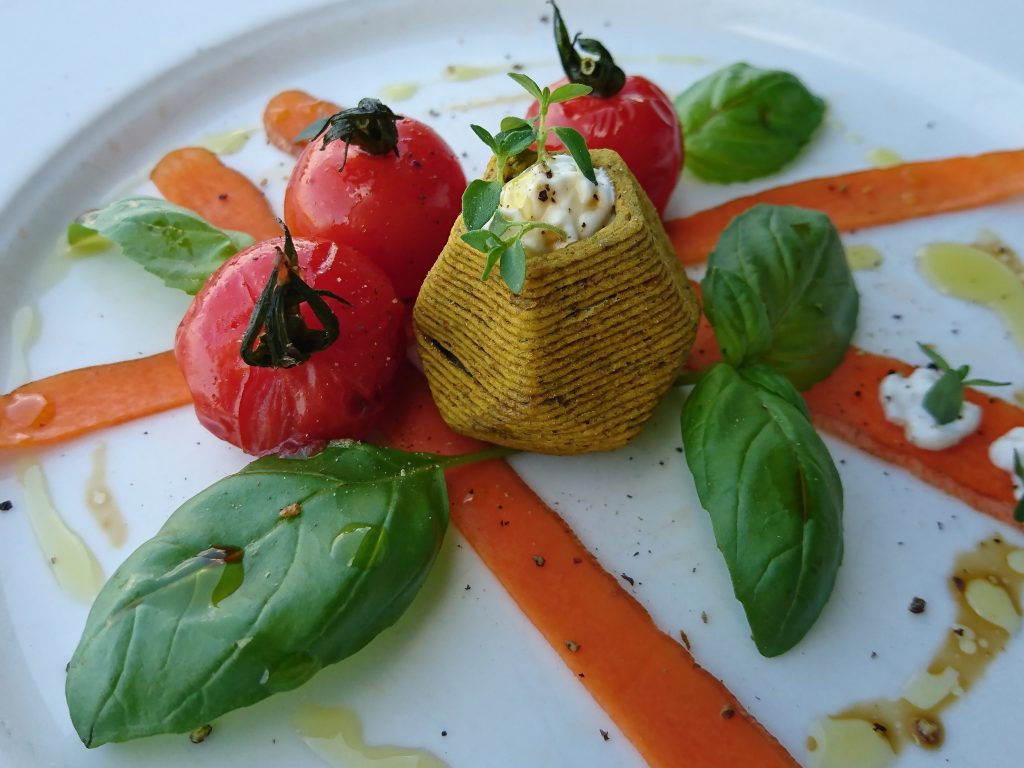
After following the minor Food Technology at the Wageningen University and Research, Elzelinde learned more about food’s material properties and the way it is produced. Once back at Eindhoven, she started working in a restaurant as to develop her skills in the kitchen and start a food design project of her own. For Elzelinde, sustainability is an important aspect in her design process: she likes to reuse and adjust materials to give them new value and give them the chance to be interesting once again.
Although Elzelinde loves to explore new production technologies, creating tasty dishes and new food products, she is very interested in if food design can mean something for our society. In order to combat food wastage, during her Industrial Design degree, Elzelinde started a new project with foods that are commonly wasted in the Netherlands, which she calls “Upprinting Food”. These foods include bread, fruits, and vegetables. Elzelinde has now teamed up with 3D Food Company, a technology company based in China, as a continuation of her project, to produce 3D printed food from leftovers.
To Elzelinde, in China people eat lots of rice, but there is also a lot of boiled rice that is wasted. This issue helped her come up with the idea of a printable food paste made with rice. To do so, Elzelinde boils the vegetables and fruit peels, dries the bread or uses the boiled rice. Once the ingredients are mashed, mixed, ground and sieved, the paste becomes smooth and can then be printed and baked. It is important that the paste is totally dehydrated and that no water remains in the food so it could be safe to eat and saved for a very long period of time. The resulting food has a crunchy texture that, according to Elzelinde, it makes them taste like “cookies” or “crackers”. This is because Elzelinde uses more than a 75% of residual food flows, with the addition of ingredients and spices for flavoring that smooths the paste.
Elzelinde is aiming to produce vegan samples by removing butter and egg. This is a huge challenge for her since these two ingredients are currently used to give the paste its smoothness and crunchiness. In the meantime, she is experimenting with herbs, vegetables, and fruits so as to create new flavors.
On October 2018, Elzelinde had the opportunity to present her recipes for Beijing Design Week, for which she developed two 3D-printed sustainable food concepts. Other participations and projects can be seen on her “Upprinting Food” website.
There is no doubt that 3D printing has impacted on many industries. The additive manufacturing not only gives everyone the opportunity to get creative, but also to solve one of the world’s biggest issues, which is food waste. Restaurants are starting to add 3D printed food to their menus, and although 3D printers still need to improve their production time, this is already promising and innovative.
[Sources & Images: Deezen, Dutch Review, Inhabitat, Upprinting Food, Conserve Energy Future]